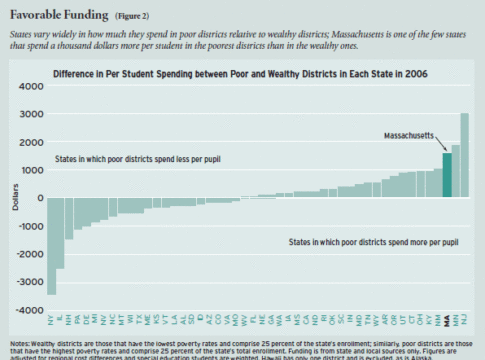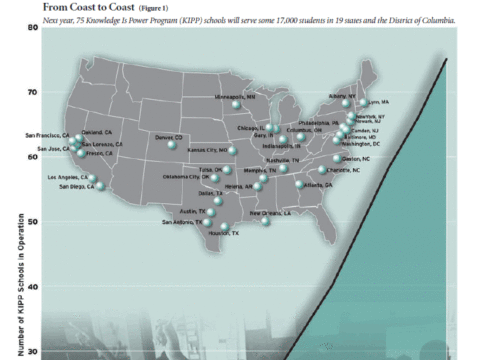 Cris Parr stands in a sunny room in an old high school surveying rows of drill presses, saws, and other outmoded industrial behemoths. Clearly no one has taught shop here in a long time, not since the goal was to prepare kids from the struggling neighborhood outside for a life in the trades.
Cris Parr stands in a sunny room in an old high school surveying rows of drill presses, saws, and other outmoded industrial behemoths. Clearly no one has taught shop here in a long time, not since the goal was to prepare kids from the struggling neighborhood outside for a life in the trades.
Parr would like someone to haul the machines away so she can replace them with drafting tables configured for computer-aided design. In most high schools, this would be the principal’s problem, or something for facilities management. She’s a teacher, but it’s very much her responsibility to change this room full of curios into a place that graduates kids ready for a high-tech workforce.
Parr is one of six members of a teacher cooperative that contracts with Milwaukee Public Schools to run the School for Urban Planning and Architecture, or SUPAR. She thought up the idea for the charter school and negotiated its partnership with the University of Wisconsin–Milwaukee. She is directly accountable for the success of the 84 students, 93 percent of whom qualify for free or reduced-price lunch.
This is precisely the type of small, nimble program envisioned by charter schools’ creators. Twenty years ago, when the late Albert Shanker, then president of the American Federation of Teachers, endorsed the notion of innovative schools operating outside conventional district bureaucracies, his aim was to put teachers at the helm. “If you want to hold teachers accountable,” he posited, “then teachers have to be able to run the school.”
Parr’s school is also a lineal descendant of one of the early success stories profiled in Joe Nathan’s celebrated 1996 survey, Charter Schools. When Parr began to consider applying for a charter, her first stop was the teacher-owned cooperative Minnesota New Country School. Galvanized by its collaborative atmosphere, she and her father, lifelong teacher organizer John Parr, spent the drive home drafting union bylaws that would allow her to start a similar school chartered by a large urban district.
Fast-forward two decades from Shanker’s then-radical proposition and there are nearly 80 teacher-governed charter schools around the country. Although most are legally constituted as worker cooperatives, they better resemble the partnerships long enjoyed by doctors, lawyers, and other professionals used to viewing their practice as a collective good.
The hyperdemocratic programs are no more a panacea for what ails American education than any other single type of school. Test scores run the gamut from abysmal to odds-defying, and at least two schools closed before graduating a single cohort. Co-op schools can be challenging to work in and, because each arrives at a leadership structure via an often-painful organic process, tough to replicate, say policymakers and teachers who have taught in them.
Still, a review of the model can add to the current conversation about improving the quality of teaching, says Ted Kolderie, a senior associate with the St. Paul–based think tank Education|Evolving and the person who first proposed the concept.
“From what we know so far it does appear that, where teachers work in collegial groups, their attitudes and behaviors differ remarkably from those we see in conventional school settings,” he says. “Better teacher and student attitudes and behaviors are not in and of themselves better learning. But if you are looking to grow bananas it makes basic sense to plant where there is fertile soil and a lot of rain. Conditions matter.”
Fertile Soil
Located in a farm community an hour south of Minneapolis, New Country is widely known as the school whose observant students tipped off the adult scientific community to large numbers of deformed frogs in the area. Since New Country’s creation in 1994, three years after Minnesota passed the nation’s first charter-school law, thousands of educators have visited, curious about the school’s approach to learning: New Country has neither classrooms nor classes. Students (grades 6–12) design projects according to their interests; the teachers help them incorporate state-mandated learning goals.
As interest in school governance innovations has grown, more of the visitors come to learn about the nuts and bolts. New Country has no employees. The teachers are members of a state-recognized co-op, EdVisions, which provides the school with human resources support and administrative services as needed.
Producer and consumer cooperatives have long been a staple of life in heavily Scandinavian rural Minnesota. The organizations create economies of scale for family farmers and other co-op members, who realize better profits and bigger discounts by joining forces. For decades, Minnesota’s rural school districts have relied on cooperatives to supply school psychologists and instructors with highly specialized licenses.
Consistent with that tradition, EdVisions teacher-owners are responsible for every aspect of the learning program, from hiring and evaluating faculty to determining curriculum and setting salaries. For tasks the teachers can’t or won’t do themselves, such as catering lunch and transporting students, the school contracts with outside vendors. In a year when EdVisions spends less than it brings in, its members decide what to do with the surplus. Often they invest in continuing education, but occasionally shareholders have taken home dividends of $100 to $300.
After a visit to New Country made at Kolderie’s behest in 2000, representatives of the Bill and Melinda Gates Foundation were impressed enough to fund its replication. Using $9 million in Gates money and a federal charter schools technical assistance grant, EdVisions has helped to create more than 40 teacher-governed schools. Minnesota and Wisconsin are home to more than half, although the schools operate in 11 states. These days, EdVisions has 250 members teaching in 56 schools. Like New Country, some feature project-based learning, while others have traditional curricula. All share the partnership model, although the legal mechanisms by which teachers control the schools vary according to the laws of the different states.
In Minnesota, for example, teachers can organize as either a worker cooperative or a nonprofit. Each school responds to its respective chartering authority; most EdVisions member schools contract with the co-op for payroll services, benefits administration, and professional development assistance. A separate foundation, EdVisions, Inc., helps write grants.
Under Wisconsin’s more complicated laws, Milwaukee’s teacher-governed schools are chartered by the district. Unlike other charters, they remain a part of the district as “instrumentalities,” or instruments of the district. The schools employ the district’s unionized teachers, who operate as members of a cooperative according to terms spelled out in agreements between the union and the district.
Regardless of their location and legal status, all of the teacher-governed schools in the EdVisions network and those surveyed by Education|Evolving are small and serve disproportionate numbers of low-income and minority students. Several are virtually all African American or Latino. One is 100 percent Native American, and another serves gay and lesbian youth who were bullied at mainline schools.
Student achievement is mixed. For example, on recent Minnesota state tests, 43 percent of students at New Country read proficiently, and just 25 percent scored at the proficient level in math. Twenty-nine percent of the school’s 123 students are from low–income families, and 37 percent receive special education services. Avalon High School in St. Paul has fewer special education students but as many who qualify for free or reduced-price lunch. Sixty percent of its 190 students scored proficient in reading in 2008 and 40 percent did so in math. At Minneapolis’s El Colegio, 86 percent of students are low income and 91 percent are minorities; just 11 percent scored proficient on either test.
In Milwaukee, test scores among the co-op schools also run the gamut. All students at the Academia de Lenguaje y Bellas Artes (ALBA) elementary school are low-income Latinos; 60 percent of 3rd graders passed math exams, and 30 percent read proficiently. Third graders at the Individualized Developmental Educational Approaches to Learning (IDEAL) school had similar scores in math but significantly higher scores in reading. Of the seven co-op high schools with 2007 test scores available, just two had higher percentages of 10th graders demonstrating proficiency in math than the district, three in reading (see Figure 1).

Many Kinds of Accountability
Teachers in co-op schools are often less interested in test scores than in the model’s potential for creating cultures that hang onto kids who might otherwise get lost in the cracks. Because they are the administrators, they can adjust lessons to each student’s needs. If something isn’t working, they have their partners’ expertise to draw on.
Observes Raven, a student at Milwaukee’s Community High School, “If one’s down, all’s down. They need each other to stay strong. Each one is like a backbone.”
Once they realize they are dealing directly with decisionmakers, students are more likely to hold themselves accountable for their learning, says Carrie Bakken, a teacher at St. Paul’s Avalon. Avalon has a student-drafted constitution and a congress that produces legislation teachers either accept or veto. Several years ago, the school had a problem with tardiness. The students wrote a bill, debated stakeholders’ likely positions, and ultimately drafted a policy that was stricter and more enforceable than anything the adults had considered. Bakken’s explanation: Accountability trickles down.
“Adolescents—their life work is to sniff out the hypocrisy of adults; that’s their full time job,” observes Harvard education professor Richard Elmore. “So you’re setting yourself up when you put yourself in that situation. You really do have to act according to your beliefs or the structure you set up doesn’t have any authority for kids and it just becomes chaos.”
According to veterans, teachers often imagine the absence of a full-time administrator means no hovering boss, but few are prepared for the demands of a system that can’t afford free riders. “Small communities tend to be pretty vicious about driving people out who don’t do the work because there’s no one there to soak up the difference when the work doesn’t get done,” says Elmore. “They operate according to a pretty powerful normative structure.”
Selecting teachers who will fit in is crucial. “We really look at, what do you bring to the table? What’s your skill set? Not just licensure,” says SUPAR founder Parr. “We have to determine who gets what role: Who’s good at external relations? Who’s good at fundraising? Who’s going to keep things on track?”
Each co-op school establishes salaries according to the priorities of its members. It’s important to Avalon’s teachers to compete with wages in the St. Paul Public Schools and to recognize teachers’ experience with higher pay, for example.
Because Milwaukee’s 11 teacher-governed schools all belong to the district, faculty receive the same pay and benefits as other Milwaukee Public Schools employees. The only difference is that the terms of their assignments are spelled out under union side agreements. The cooperatives that run the schools decide whom to hire and when to return poor performers to the district’s hiring pool for reassignment.
All use some form of peer review. At Avalon, parents, students, and teachers—who are referred to as advisers—fill out anonymous evaluations via SurveyMonkey. “The key question is whether an adviser is meeting the job description,” says Bakken. “What does that adviser do well, not do well? It ends by asking whether this person should return next year.” Faculty who shouldn’t return usually realize as much before evaluation time.
“You have to work at maintaining this culture,” says Bakken. “There’s a huge learning curve for new people.”
Distributing Leadership
Not surprisingly, teacher-run schools can founder on the question of leadership. Because they are what Elmore calls “purpose-built,” the schools can appear to be tightly knit communities unified by a strong vision. But, Elmore says, “they tend to be very vulnerable when they confront a problem where they actually have to operate like an organization.” Teacher-owners have to figure out how to apportion the responsibility most schools vest in a principal or other authority or risk imploding in the face of external pressures like declining enrollment, poor test scores, or public controversy.
Distributing leadership takes both time and effort. Elmore cites research by the University of Michigan’s Roger Goddard that collective efficacy—in this instance, teachers who believe that by working together they are effective—has a powerful effect on student learning. It’s a level of functioning that can’t be grafted onto one school from another; systems can be copied, but the exact mix has to emerge organically.
Some schools adjust workload or pay for teachers who take on administrative or other extra responsibilities, but establishing a governance structure tied to compensation is less important than dividing duties according to aptitude or inclination, say teachers who work in the schools. Two of Avalon’s 14 teachers split their time between the classroom and administration. Bakken is one; she prefers to handle paperwork, while her counterpart enjoys external relations.
Ideally, Avalon’s team makes decisions by consensus at its twice-a-week meetings, but members vote when necessary. “When we know there’s a contentious issue coming up we talk a lot,” says Bakken. “In the meeting we use a ‘fist-of-five’ system: People hold up five, four, three fingers to indicate some degree of agreement. One or two is disagreement. A closed fist blocks action.”
SUPAR’s teachers also meet twice a week, but responsibility is vested differently. Because Wisconsin law says one person must sign a school’s charter, Milwaukee’s teacher-led schools have lead teachers. Originally the job was supposed to rotate every two years at the New School for Community Service, but it took founder Marty Horning so long to accumulate enough knowledge to be efficient he’s ended up the de facto go-to person.
Without a strong structure, teacher-run schools are vulnerable to collapse when core members retire or move on. EdVisions cofounder Doug Thomas worries that a minority of the co-op’s 250 members are truly invested as owners. “I’ll be brutally honest,” he says. “About a third of the people who belong really get it. A third like the idea but they’re really busy. A third look at their check every month and wonder, ‘Why does my paycheck come from EdVisions? What is that?’” If he had it to do over, Thomas would constitute the schools as nonprofits, chiefly to make it easier for teachers to write grants.
An associate at the policy incubator Education|Evolving, Kim Ferris-Berg, believes ownership matters. “Any given structure may get professionalism for teachers and higher-performing students,” she says. “The teacher professional-partnership arrangement maximizes the pressure to do it right because teachers are accountable for results, but results are not guaranteed.”
Whatever the details, Kolderie is convinced it’s time to hand both authority and responsibility to the same people. “The dominant notion in this country at the moment is that improving teaching is something the boss does,” he says. “We might at long last try approaching teachers as professionals; telling them what we want and leaving it to them, organized in collegial groups and made responsible for performance, to figure out how the job can best be done.”
Beth Hawkins is a Minneapolis-based writer and covers education, among other topics, for Minnpost.com.





